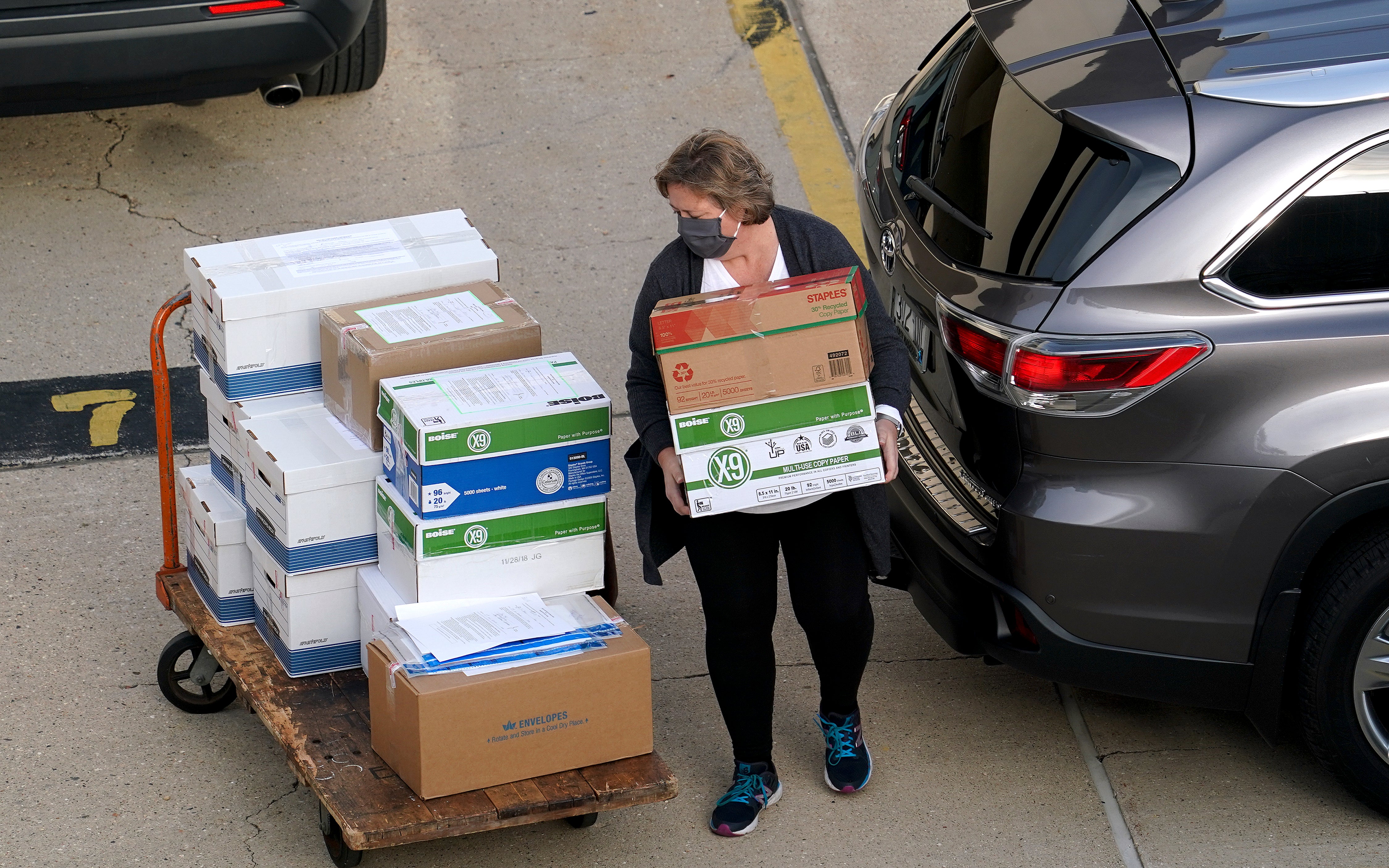Wisconsin recount: Masks, plexiglas and lots of ballots
Wisconsin's election recount gets underway on Friday with scores of workers, high-speed ballot processing machines and lots of plexiglas

Your support helps us to tell the story
From reproductive rights to climate change to Big Tech, The Independent is on the ground when the story is developing. Whether it's investigating the financials of Elon Musk's pro-Trump PAC or producing our latest documentary, 'The A Word', which shines a light on the American women fighting for reproductive rights, we know how important it is to parse out the facts from the messaging.
At such a critical moment in US history, we need reporters on the ground. Your donation allows us to keep sending journalists to speak to both sides of the story.
The Independent is trusted by Americans across the entire political spectrum. And unlike many other quality news outlets, we choose not to lock Americans out of our reporting and analysis with paywalls. We believe quality journalism should be available to everyone, paid for by those who can afford it.
Your support makes all the difference.Wisconsin on Friday will begin recounts of the presidential race in the state's two biggest and most Democratic counties. It's a longshot bid by President Donald Trump — who paid a required $3 million fee — to undo Joe Biden's victory. Trump, who lost by more than 20,600 votes in Wisconsin, has alleged “mistakes and fraud” in the two counties, though he has produced no evidence to back up his claims.
Some things to know about the recount:
WHY THESE TWO COUNTIES?
Biden's victory over Trump was fueled by Democrat-heavy Milwaukee and Dane counties, making them ripe targets for Trump to try and discount votes. The counties are home to Milwaukee, the state's most racially diverse city, and Madison, the state Capitol and location of the University of Wisconsin's flagship campus. Combined, Biden won the counties by a more than 2-to-1 margin.
WILL THE RECOUNT BE SAFE?
The recount will bring together hundreds of people at a time when the coronavirus is ravaging Wisconsin, which has been one of the nation's worst COVID-19 hot spots for weeks. One in every 118 people in Wisconsin has tested positive in the past week. To help reduce the risk, both counties are renting convention centers so that workers and observers can be properly distanced. In Milwaukee, where the recount will be conducted at the 186,000-square-foot Wisconsin Center, everyone inside will be required to wear a mask, pass a temperature screening and maintain appropriate social distancing. Anyone not following those requirements will be ejected.
The recounts must be finished by a Dec. 1 deadline. Milwaukee County expects to be finished the day before Thanksgiving, an event widely expected to hasten the spread of the virus. Dane County is planning 16-hour days and didn't immediately respond to questions about their expected completion date. Both plan to use machines to recount the ballots, although Dane County says it will do some hand-counting from randomly selected precincts for an audit, as required by law.
WHO DOES THE RECOUNT?
Both county clerks are Democrats and are in charge of the recounts. They are bringing in many of the same poll workers who counted the ballots on Election Day to process the recount. In Milwaukee, workers will be arranged in two-table “pods,” with one worker at each table, and up to three observers allowed at each pod. The observers must stay 6 feet away, and plexiglass barriers will provide added protection. Four sheriff's deputies will provide security 24 hours a day until the recount is completed.
WHO CAN WATCH? AND WHAT ABOUT CHALLENGES?
Citizens can watch in person, although Dane County wasn't immediately sure how many would be allowed in because of the COVID-19 pandemic. Both counties said safety would be a priority; in Milwaukee County, on-site observers will have to go through security and a temperature check, and will have to wear masks.
Both counties also plan livestreams; Milwaukee County Clerk George Christenson said $400,000 was being spent on audiovisual equipment to make sure the recount is transparent.
As for challenges, representatives of both campaigns must be allowed to observe and challenge ballots, although they must “provide offers of evidence” to justify them. Disputed ballots are set aside to be considered by the canvassing board. Observers can also challenge the makeup of the board of canvassers and the procedures being followed.
WILL THIS CHANGE THINGS?
Not likely. Wisconsin's 2016 recount, which was statewide and was requested by Green Party candidate Jill Stein, barely moved the needle on any candidate's totals, netting Trump an additional 131 votes.
More broadly, there's no precedent of a recount changing the outcome of an election in which the margin between the top two candidates is as large as the one Biden holds over Trump.
There have been at least 31 recounts in statewide elections in the U.S. since the most famous one in Florida’s presidential election in 2000. The recounts changed the outcome of three races. All three were decided by hundreds of votes, not thousands.
Of those 31 recounts, the largest change in the margin between the top two candidates was 0.1 percentage point, which happened in the 2006 race for Vermont’s auditor of accounts. The average shift in the margin between the top two candidates — whether the margin increased or decreased — was 0.019 percentage points.
Biden leads Trump by about 0.6 of a percentage point.
WHAT HAPPENS WHEN IT'S OVER?
Once the recount is complete, the chair of the Wisconsin Elections Commission is charged with certifying the results by Dec. 1. But a lot can happen before then, including expected legal challenges. Trump's legal challenges in other states have been unsuccessful, but Republican supporters in Wisconsin have hopes that he may fare better before the state's conservative-controlled Supreme Court.
___
Glass reported from Minneapolis.